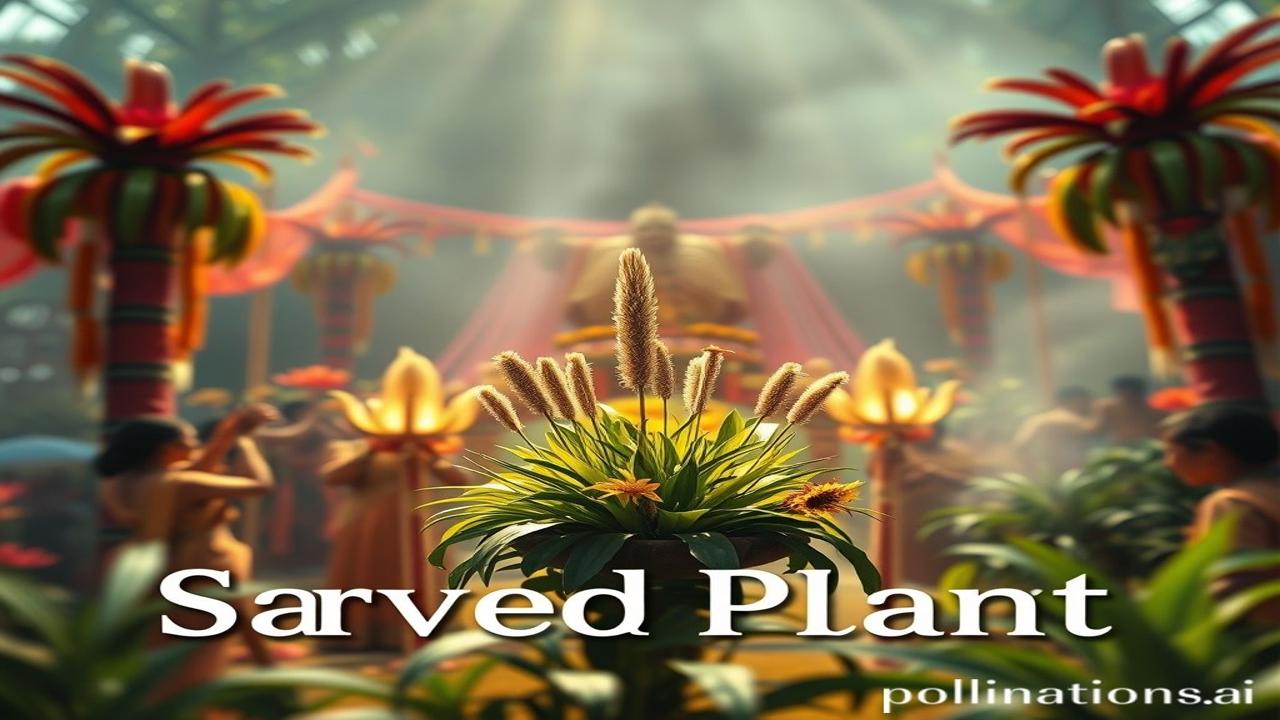Sacred Plant Festivals: Plants That Whisper Ancient Secrets
Kabhi socha hai, jab subah ki pehli kirane peepal ke patton se chhan kar aati hain, toh woh sirf roshni nahi, balki ek gupt kahani bhi saath laati hain? These stories, etched in the veins of leaves and the rings of ancient trees, hume connect karti hain to a past where plants weren’t just resources, but living gods, and sacred festivals celebrated their power. Let’s unearth these hidden narratives!
Historical Background: When Plants Were Gods
Sacred plant festivals, dear friends, are not just about worshipping nature; they’re about acknowledging the shakti embedded within it. India, with its rich tapestry of traditions, has always revered plants. Think of the Tulsi Vivah, celebrating the marriage of the holy basil plant, or the Vat Savitri puja, where women tie threads around banyan trees for the longevity of their husbands. These aren’t isolated events.
These practices trace back thousands of years, visible in the Indus Valley Civilization’s depictions of sacred trees and deities associated with plants. From the Vedic age, hymns praised the healing properties of herbs and the spiritual significance of forests. The Atharva Veda, for instance, is practically a pharmacopoeia, detailing the medicinal uses of countless plants. These weren’t just remedies; they were gifts from the gods. The concept of Vanaspati, meaning ‘lord of the forest,’ highlights the importance of plants as givers of life and sustainers of the cosmos. We can’t pinpoint a single origin point; rather, it’s a continuous stream of reverence that evolved organically across regions and time.
Why so important? Because plants were, and in many ways still are, directly linked to survival, healing, and spiritual well-being. A good harvest meant life, a potent herb meant cure, and a sacred grove meant connection to the divine.
Zamini Sach: Life Lived Under the Banyan’s Shade
Imagine… 500 BC, a small village nestled beside the Ganges. Maa Yashoda tends to her Tulsi plant in the courtyard, chanting mantras as she waters it. She believes this plant protects her family. Her husband, a farmer named Keshava, is in the fields, his hands calloused but his heart full of gratitude for the rice stalks swaying in the breeze. Tonight, they will celebrate the Anna Purnima festival, giving thanks for the bounty of the harvest.
Later, Keshava tells his son, “Beta, yeh ann sirf bhojan nahi hai. Yeh dharti maa ka aashirwad hai.” (Son, this food is not just sustenance. It is the blessing of Mother Earth.) His daughter Rukmini helps him weave garlands of marigolds and mango leaves to decorate the village shrine, dedicated to the Vanadevi – the Goddess of the Forest. The air is filled with the aroma of burning incense and the rhythmic chants of the villagers, giving thanks to the plants that sustain their life. They understand their survival and prosperity depend on them.
Dharohar aur Pehchaan: Echoes of the Past Today
Even in our concrete jungles, the echoes of these sacred plant festivals resonate. Think about it:
- Rituals: We still offer flowers and fruits to deities in temples. Prasad, often prepared using herbs and spices, is considered sacred.
- Art: Traditional paintings, like Madhubani and Warli art, often depict trees and plants as symbols of fertility and prosperity.
- Architecture: Many ancient temples are built near sacred groves, integrating nature into the sacred space. The very concept of Vastu Shastra considers the influence of plants on the energy of a living space.
- Language: Sanskrit shlokas and mantras continue to celebrate the medicinal and spiritual properties of plants.
- Festivals: While the scale may have changed, festivals like Holi (using natural dyes) and Onam (celebrating the harvest) are rooted in reverence for nature’s bounty.
These traditions, woven into the fabric of Bharatiyata, remind us that we are inherently connected to the natural world. They challenge us to reconsider our relationship with plants, not just as resources to be exploited, but as essential components of a balanced and harmonious existence.
Fun Fact: Bhang – A Sacred Intoxicant?
Log samajhte hain ki bhang sirf nasha karne ki cheez hai…lekin asli sach yeh hai… historically, bhang (derived from cannabis) held a significant place in religious ceremonies. Ancient texts, like the Atharva Veda, mention it as one of the five sacred plants. It was believed to facilitate meditation and enhance spiritual experiences. Of course, its use was often regulated and reserved for specific rituals, a far cry from its recreational misuse today!
Visual and Sensory Layer: The Sweet Smell of Sanctity
The air hangs thick with the scent of sandalwood and jasmine. The rough texture of the ancient banyan tree’s bark feels cool against your skin as you walk into its shade. The rhythmic chanting of mantras, the rustling of leaves in the breeze, the vibrant colours of the marigold garlands… These are the sensory details that bring the past to life, reminding us of the profound connection between humanity and the plant kingdom.
Antim Vichar: A Seed of Reflection
“Vasudhaiva Kutumbakam” – The world is one family. This ancient concept extends beyond humanity; it includes all living beings, including plants. Let’s remember that we are all interconnected threads in the tapestry of life. May we treat the plant kingdom with the respect and reverence it deserves.
